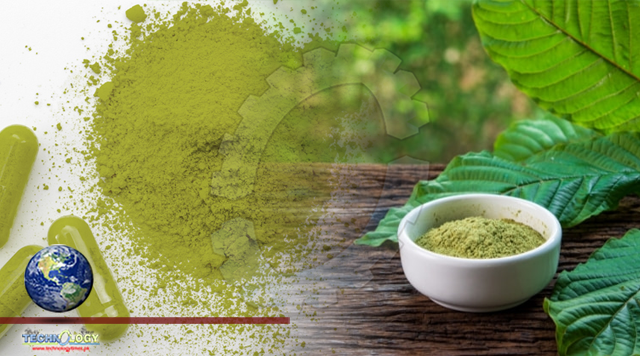The U.S. Food and Drug Administration (FDA) has expressed concerns about the safety and potential misuse of kratom.

Kratom is a tropical tree native to Southeast Asia, particularly Thailand, Malaysia, and Indonesia. Its leaves have been used for centuries in traditional medicine for their stimulant and analgesic effects.
In recent years, kratom has gained popularity in the United States and other countries as an herbal supplement for various purposes, including pain relief, energy boosts, and mood enhancement.
Kratom contains active compounds called alkaloids, with mitragynine being the primary alkaloid responsible for its effects.
It interacts with opioid receptors in the brain, producing both opioid-like and stimulant effects. Some people have reported positive experiences with kratom, citing pain relief and an improved mood. However, there are also concerns about its potential risks and addictive properties.
The U.S. Food and Drug Administration (FDA) has expressed concerns about the safety and potential misuse of kratom. While it is legal in most states, the FDA has not approved kratom for any medical use and has issued warnings about its potential side effects, including liver damage, addiction, and withdrawal symptoms.
Moreover, kratom products may be adulterated or contaminated, which can pose additional health risks. Research on kratom is ongoing, and its potential benefits and risks are still being studied. It is important to consult with a healthcare professional before using kratom or any other herbal supplement, especially if you have underlying health conditions or are taking medications.
Kratom (Mitragyna speciosa) is a tropical evergreen tree native to Southeast Asia, particularly Thailand, Indonesia, and Malaysia. It belongs to the coffee family (Rubiaceae) and is known for its psychoactive and medicinal properties. In this article, we will explore the history, nomenclature, classification, medicinal uses, and cultivation process of Kratom.
History:
The use of Kratom can be traced back to the 19th century, where it was used by laborers and farmers in Southeast Asia for its stimulating and pain-relieving properties.
In Thailand, Kratom was traditionally used to treat various medical conditions, including diarrhea, fever, and fatigue. In the early 20th century, Kratom was introduced to the Western world and gained popularity among recreational users for its euphoric effects.
Nomenclature:
Kratom is also known as Biak-Biak, Ketum, Thom, Kakuam, and Ithang. The scientific name for Kratom is Mitragyna speciosa. The genus Mitragyna comprises about 50 species of trees and shrubs, most of which are native to Southeast Asia and Africa.
Classification:
Kratom belongs to the Rubiaceae family, which is the same family as coffee and gardenia plants. The species Mitragyna speciosa is classified under the division Magnoliophyta, class Magnoliopsida, order Gentianales, family Rubiaceae, and genus Mitragyna.
Medicinal Uses:
Kratom has a long history of traditional medicinal use in Southeast Asia. Its leaves contain a variety of alkaloids, including mitragynine and 7-hydroxymitragynine, which have been shown to have both stimulant and sedative effects.
Kratom has been traditionally used to treat various medical conditions, including diarrhea, coughs, and pain. In recent years, Kratom has gained popularity among Western users for its potential to alleviate chronic pain, anxiety, and depression. However, its use as a medicinal plant is still a subject of controversy and research.
Cultivation Process:
Kratom is a tropical tree that thrives in warm and humid environments. It requires well-draining soil and ample sunlight to grow. Kratom trees can grow up to 80 feet tall, but they are typically cultivated to a height of 12–50 feet. The leaves of the Kratom tree are harvested by hand and dried in the sun. The dried leaves can be consumed directly or processed into powder, capsules, or extracts.
Conclusion:
Kratom is a tropical tree native to Southeast Asia that has a long history of traditional medicinal use. Its leaves contain a variety of alkaloids that have been shown to have both stimulant and sedative effects.
Kratom has gained popularity among Western users for its potential to alleviate chronic pain, anxiety, and depression. However, its use as a medicinal plant is still a subject of controversy and research. Kratom cultivation requires a warm and humid environment, well-draining soil, and ample sunlight.